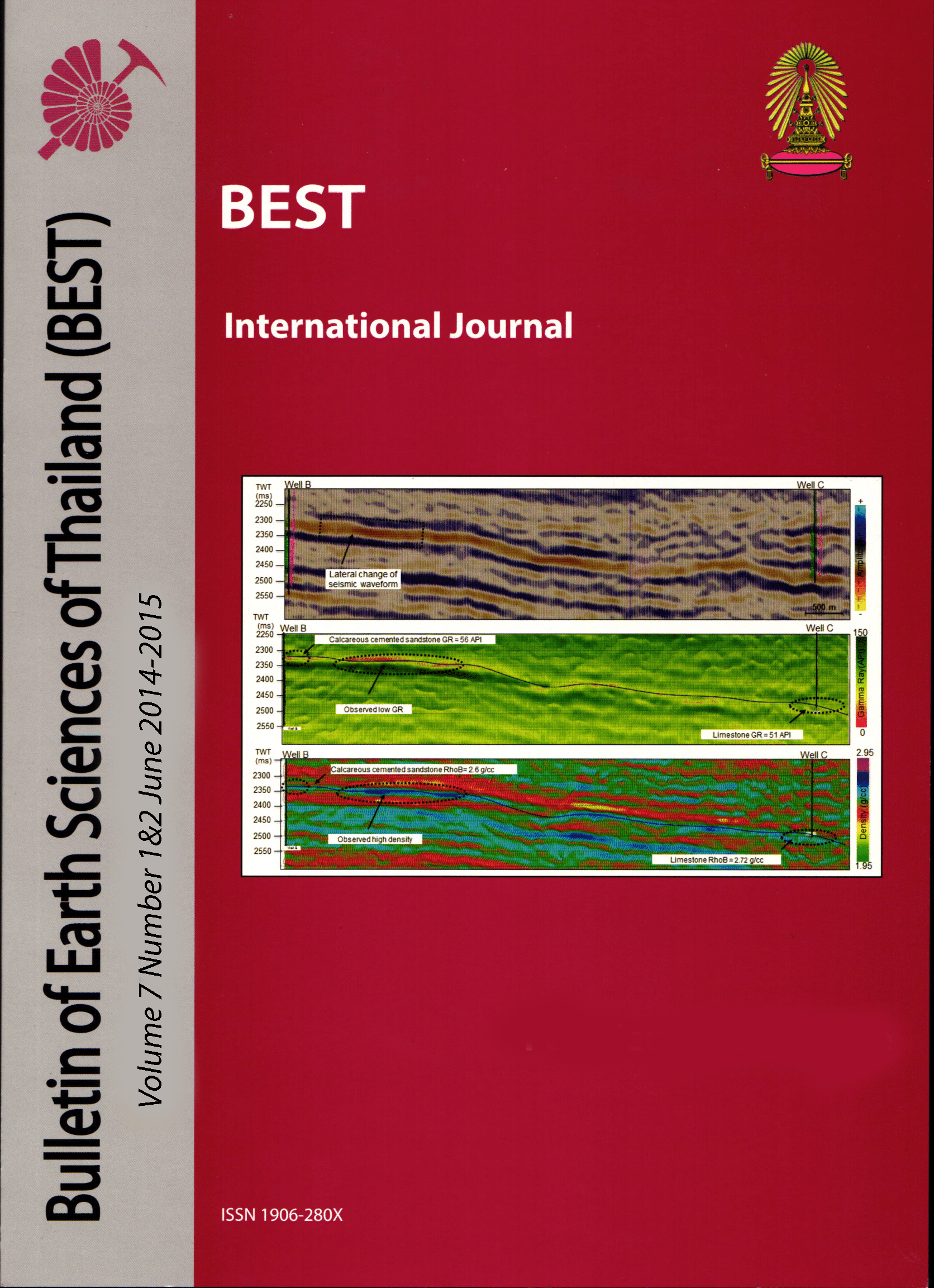The Study of the Deepwater Clastic Depositional Systems and Reservoir Distribution in East Andaman Basin, Thailand
Main Article Content
Abstract
The Andaman Sea deepwater area is a challenging new exploration play for potential hydrocarbons in western offshore Thailand. Little is known of this area and this study focuses on depositional processes in the deepwater environments in an area of the East Andaman Basin where 3D seismic data has recently been acquired. This study focuses on the Middle to Late Miocene section in the early post-rift stage of the basin development.
Deepwater depositional packages were identified which are potential reservoirs in this study area by using seismic facies analysis, thickness variations from time isochron of depositional packages and RMS amplitude extractions. The interpreted 3D model of the paleo-topography at the time shows three canyons incised into the South Sagaing fault scarp to the east which were the conduits for potentially course grained deepwater sediments into the area of interest. A total of five seismic horizons were mapped and 12 depositional packages identified which consisted of submarine talus / base of slope deposits, submarine channels and submarine fans, all of which relate to the three main submarine canyons. Up-dip erosion of the exposed Mergui Ridge acted as the potential source area for sediment that was re-worked and deposited within the deep marine environment in the study area. Reservoir potential based on seismic facies analysis of the seismically defined high amplitude packages is good based on comparisons with analogous features in other deepwater basins which have well data to confirm their lithologies.
Article Details

This work is licensed under a Creative Commons Attribution-NonCommercial-NoDerivatives 4.0 International License.
Copyright © 2008 Department of Geology, Faculty of Science, Chulalongkorn University. Parts of an article can be photocopied or reproduced without prior written permission from the author(s), but due acknowledgments should be stated or cited accordingly.
References
Jackson, C. A.-L., 2007, The geometry, distribution, and development of clastic injections in slope systems: Seismic examples from the Upper Cretaceous Kyrre Formation, Maløy slope, Norwegian margin, in A. Hurst and J. Cartwright, eds., Sand injectites: Implications for hydrocarbon exploration and production: AAPG Memoir 87, p. 37– 48.
Jha, P., D. Ros, and M. Kishore, 2012, Seismic and Sequence Stratigraphic Framework and Depositional Architecture of Shallow and Deepwater Postrift Sediments in East Andaman Basin: An Overview: Extended Abstract, GEO India 2011 Conference and Exhibition.
Mutti, E., 1985, Turbidite systems and their relations to depositional sequence, in Zuffa, G.G., eds., Provenance of Arenites, D.Reidel Plublishing Company, Dordrecht, p. 65-93.
Normark, W.R., 1978, Fan valleys, channels, and depositional lobes on modern submarine fans: characters for recognition of sandy turbidite environments, AAPG Bulletin 62, p 912-931.
Srisuriyon, K., C.K. Morley, 2013, Pull-apart development at overlapping fault tips: Oblique rifting of a Cenozoic continental margin, northern Mergui asin, Andaman Sea, Geosphere published online, doi: 10.1130/GES00926.1.


